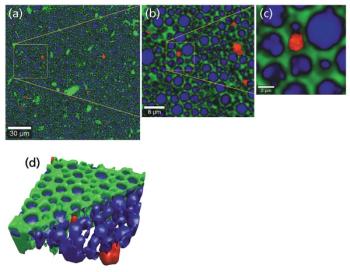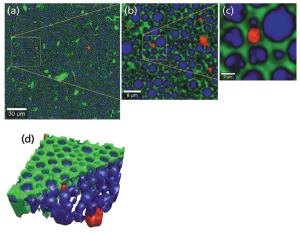
This study provides an overview of correlative Raman imaging, PL and topographic analyses of compound semiconductors used to characterize composition and defects.

This study provides an overview of correlative Raman imaging, PL and topographic analyses of compound semiconductors used to characterize composition and defects.

See Raman imaging investigate living cell components & plant cell walls, recognize atherosclerosis, differentiate malignant cells, monitor lipid uptake, and much more.

This survey shows how Raman imaging can characterize food samples such as honey, chocolate, and fat spreads to help understand the products and production processes.

This survey shows how Raman imaging can characterize food samples such as honey, chocolate, and fat spreads to help understand the products and production processes.


*Wednesday, May 19, 2021 at 1pm EDT* Confocal Raman imaging is a powerful, versatile, and increasingly common microscopy technique capable of quickly identifying the molecules in a sample and visualizing their physical distribution three-dimensionally. The conference will give a comprehensive overview of current technologies and their latest applications. *On Demand Until May 19, 2022*

Confocal Raman microscopy is a powerful tool for analyzing the chemical composition of samples on the submicrometer scale. In the food industry, various ingredients, additives, and bio-polymers (such as emulsifiers, stabilizers, carbohydrates, or thickeners) are commonly used to optimize the texture or the flavor of food. The distribution and microstructure of the ingredients strongly influence the properties of the final product. Therefore, research and development, as well as quality control, require powerful analytical tools for studying the distribution of compounds in food. Raman imaging has proven to be an effective and versatile technique for food analysis (1,2).


The white paper provides a detailed insight into Raman imaging for pharmaceutical applications. It introduces large-area, ultra-fast, topographic and 3D confocal Raman imaging along with correlative imaging techniques.

Overcoming the boundary between user-friendliness and the ultimate capability in Raman Imaging is the key to effortlessly manage the image-acquisition and data evaluation at the highest lateral and spectral resolution. This executive summary will explore how the most intricate Raman Imaging experiments can be easily accomplished leading to a greatly improved data quality, ease of use and productivity.

Published: February 1st 2021 | Updated:

Published: April 12th 2023 | Updated:

Published: March 21st 2016 | Updated:

Published: October 6th 2016 | Updated:

Published: February 1st 2017 | Updated: